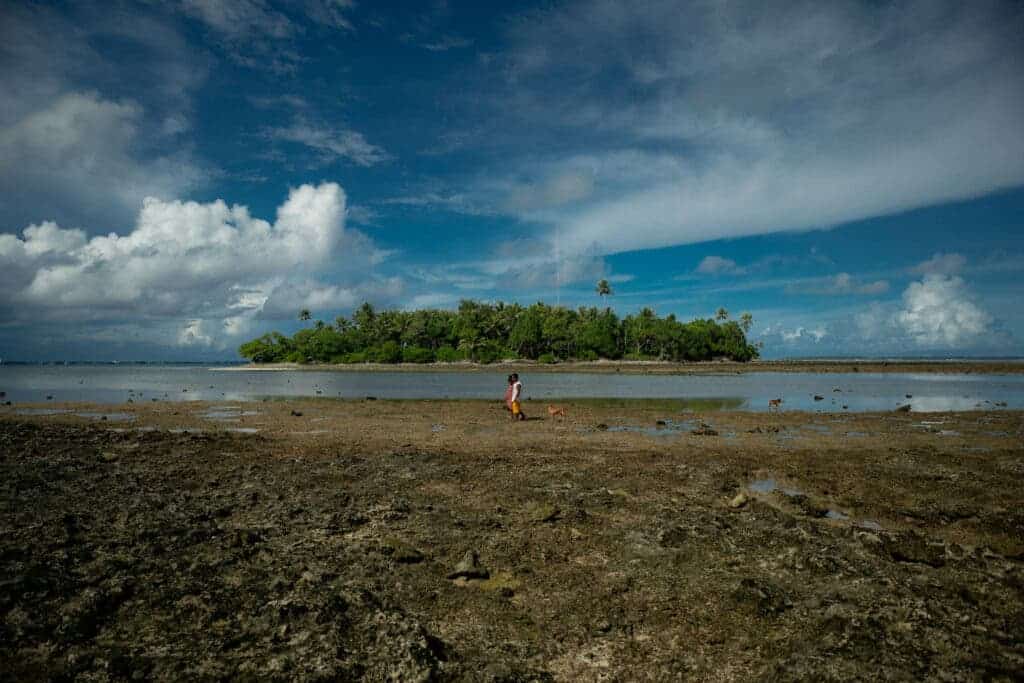Climate change doesn’t affect everyone the same way. The world’s poorest countries are suffering the most, although they’re not responsible for producing the emissions that caused global warming in the first place.
That’s why developed countries and other donors have pledged funds to developing nations to help them adapt to the climate effects. But it seems they’ve largely exaggerated their promises, giving $20 billion less than what they had initially said over the last decade.

The Paris Agreement on climate change, signed in 2015, commits countries to provide scaled-up financial resources, evenly balanced between cash to reduce greenhouse gas emissions and to adapt to the climate effects. Donors had committed to giving $50 billion per year just for adaptation by 2020.
At the last count in 2018, developed countries and organizations had committed just $16.8 billion, according to a previous OECD report. But the real figure might actually be even lower. The environmental organization CARE International calculated only $9.7 billion have been allocated for climate adaptation, much lower than previous estimates.
John Nordbo, one of the report’s authors, said in a statement:
“Not only have rich nations let countries in the Global South down by failing to deliver enough adaptation finance, but they have tried to give the impression that they are providing more than they do. It is truly embarrassing. This injustice must be corrected.”
Together with civil society, CARE assessed 112 projects, representing 13% of total global adaptation finance between 2013-17. The research found climate adaptation finance to be over-reported by 42%, which if applied to the remaining projects, would result in $20 billion of over-reporting across this time period.
In other words, countries and other donors have exaggerated their adaptation funding by including finance for projects that bear no relation to adaptation — masquerading projects such as housing and roads as climate adaptation. That’s the case of Japan, for example, which over-reported its funding by $1.3 billion. This includes $432 million on projects not related to climate adaptation.
France over-reported by a total of $104 million. This includes $93 million on a program in the Philippines to help strengthen local governance, even though only 5% of the program’s budget is earmarked for climate adaptation objectives. Meanwhile, the World Bank over-reported by $832 million in total, including $328 million on an Earthquake Housing Reconstruction Project in Nepal.
The report also included six in-country assessments of projects in Nepal, Ethiopia, Philippines, Vietnam and found that almost half of them don’t mainstream gender equality. This happens although the Paris Agreement asks for adaptation to follow a “country-driven, gender-responsive, participatory and fully transparent approach.”
Bart Weijs from CARE and co-author of the report, said in a statement: “This is not just about the numbers. It’s about millions of vulnerable people risking their lives in ever more frequent climate disasters. It’s about restoring people’s faith in climate governance. $50 billion or more is really not a high price to pay for this – if we do this together.”
In the Paris Agreement, countries committed to limit global warming above pre-industrial levels to “well below” 2ºC, ideally aiming for 1.5ºC. But warming has already exceeded 1ºC, triggering all sort of climate-linked disasters that have affected developing countries, from hurricanes and tornados to flooding events — and the 1.5ºC target is farther and farther away.
The United Nations said last week that countries are falling short of their pledges to fund poor countries in climate adaptation. In its Adaptation Gap report, the UN said the true cost of adaptation was currently around $70 billion annually. But the figure could reach up to $300 billion a year by the end of the decade, as the consequences of climate change worsen.
UN head Guterres asked donor governments and development banks to commit to directing at least 50% of their climate finance towards adaptation and resilience before the climate conference Cop26 next year. “Until now adaptation represents only 20% of climate finance, reaching only $30 billion on average in 2017-2018,” he said at a summit last month.









